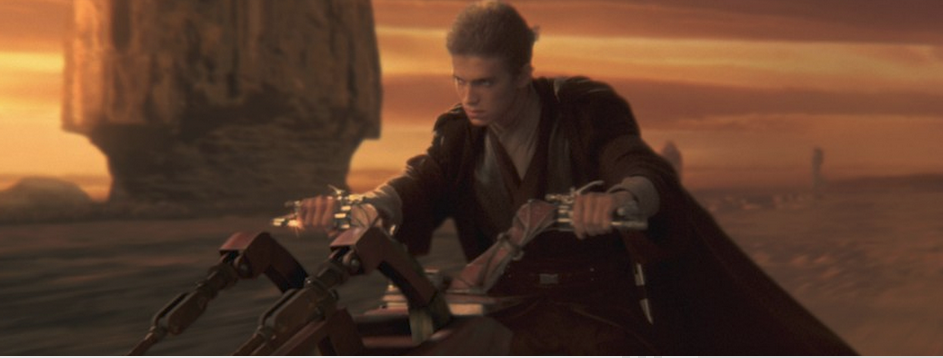Via Starwars.com:
John Ford is the sort of filmmaker who spent his entire career making movies that inspired other filmmakers. Everyone from Orson Welles and Akira Kurosawa to Steven Spielberg and George Lucas have claimed Ford as an important influence. For this week’s column on the influence of films on Star Wars, we set our sights to John Ford’s 1956 film The Searchers, considered by many to be his finest picture.
The Searchers stars John Wayne as Ethan Edwards, a veteran of the losing side of the Civil War, comes home to his brother’s ranch and the only family he’s ever known. Then, a raiding party of Comanche leads the men of the homesteads away while they kill the women and children left behind. But not all the women and children were killed, some were merely abducted by the tribe. Ethan and his nephew go on the hunt, to either rescue the girls if they’re still alive or avenge their deaths. The quest takes years and the final result isn’t the happiest for the characters, but it’s one of the most emotionally charged films ever made.
Shot in the sparse deserts of Monument Valley, the film is as hot and oppressive as the twin suns of Tatooine, and the scenes from the Star Wars saga that take place on Tatooine are those that draw the most inspiration from John Ford’s magnum opus.
Starting with A New Hope, the landscapes surrounding the Lars homestead are immediately reminiscent of the isolated homesteads of The Searchers. The cattle ranchers in Ford’s film are as solitary as the moisture farmers on the outskirts of the Jundland Wastes and they all live in equal fear of the indigenous populations. The desert dwelling Tusken Raiders are an obvious parallel to the anachronistic portrayal of Native Americans, and they’re regarded with the same fear.
When Luke comes back home after he realizes the Imperials might have attacked, the scene before him, with his home burning and his aunt and uncle dead, is much the same scene John Wayne comes home to after being lured away by the Comanche war party. Where this sight sends Luke on his quest to become a Jedi, it sends Ethan Edwards on a quest for revenge against those who’ve wronged him.
There’s much stronger parallels, however, in Attack of the Clones. Much like Natalie Wood’s Debbie taken by the Comanches, Shmi Skywalker is kidnapped by the sand people and her husband, Cliegg Lars, leads a search party to go after her. Like the initial search party in The Searchers, Lars and his fellow homesteaders come up with nothing. In just a few lines of dialogue from actor Jack Thompson, George Lucas is able to imply most of the plot of The Searchers and bring it into the fold of Star Wars. But Cliegg and his search party are completely unable to rescue his wife, many are killed and Cliegg loses his leg.
It’s only when Anakin Skywalker arrives to the homestead after a long absence and has a contentious meal with the family (just as Ethan begins The Searchers) that the hunt resumes.
Anakin then goes after his mother with the same zeal, and set to many of the same shots, as Ethan Edwards. In fact, most of the montage of Anakin seeking out the Tusken camp is taken shot for shot from The Searchers.
The climax of The Searchers plays out much the same as Anakin’s destruction of the Tusken camp. In fact, the last shot of Anakin has him beheading a sand person and it evokes the same visceral reaction as Ethan Edwards scalping the villainous Scar.
Such is the brilliance of George Lucas that he can compress the entirety of a film like The Searchers into the space of a few minutes on film in Star Wars.
The Searchers wasn’t nominated for a single Academy Award, but has since been hailed as a masterpiece of its time and, in 1989, was selected for preservation by the Library of Congress. It’s a stunning film and still stands up for modern audiences of all ages. There are terrifying events that happen, but none of it is more intense than what is seen in Attack of the Clones.

